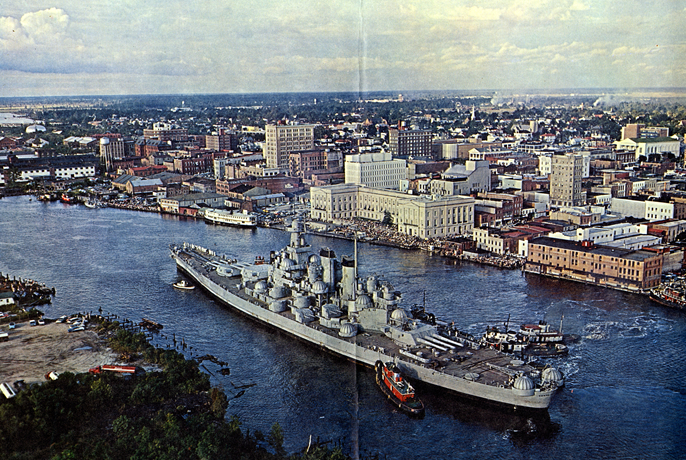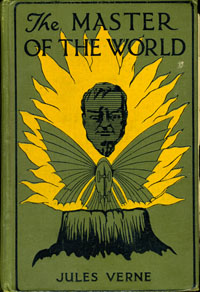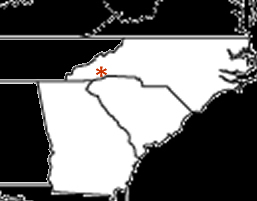This Month in North Carolina History

On the 13th of June, 1940, BB 55, the first American battleship built since 1921 and the first of the Navy’s modern fast battleships, was launched from the Navy Shipyard in New York. At her launching BB 55 was sponsored by Isabel Hoey, daughter of the governor of North Carolina. Miss Hoey was present because BB 55 was to become the third vessel in the United States Navy to carry the name North Carolina.
The USS North Carolina was designed to be fast and powerful. Even with her massive armor, nine 16-inch guns, and 1,900 man crew, the North Carolina drove through the water at an impressive 28 knots. With her sleek good looks, she was also a crowd pleaser, nicknamed the “Showboat” by the men who built and tested her.
When the North Carolina was launched the United States was at peace, but war was raging in Europe and Asia. By the time she had finished her shakedown cruise, commissioning, and training exercises, the country had gone to war, and the North Carolina was hurried to the Pacific to help replace the battleships lost in the Japanese attack on Pearl Harbor, Hawaii, on December 7, 1941. From June 1942 until the end of the war in 1945, the North Carolina was heavily engaged in screening aircraft carrier task forces and using her big guns in support of assaults on Japanese held positions. She sailed more than 300,000 miles, engaging in every major naval operation in the Pacific theater, and earning 15 battle stars.

The end of the Second World War was also the end of the active career of the North Carolina. The Navy designed and built the ship in the late 1930s as one of its premier offensive weapons. Battleships carried the war to the enemy. After the spectacular air assault on Pearl Harbor, however, the Navy came increasingly to depend on the aircraft carrier as its chief weapon.
Battleships like the North Carolina became escort vessels, screening carriers from surface and air attack, and gun platforms supporting troops in amphibious invasions. In 1947 the North Carolina was decommissioned and made part of the reserve fleet anchored in Bayonne, New Jersey.
For 13 years the North Carolina lay becalmed in the “mothball fleet,” but in 1960 North Carolinians led by Terry Sanford, Luther Hodges, and Hugh Morton, in cooperation with the Navy, began making plans to bring the ship to Wilmington. In that same year a statewide campaign for public support for the vessel raised $325,000, including money raised by 700,000 school children. On October 2, 1961, the North Carolina was carefully maneuvered through the narrow channel into the port of Wilmington to its new berth. The battleship had become a museum ship, a monument to the great warships and the people who sailed on them and a memorial to North Carolinians who served and died in World War II.
Sources:
Dictionary of American Naval Fighting Ships. Washington: Navy Dept., Office of the Chief of Naval Operations, Naval History Division, U.S., 1959-1981.
Mobley, Joe A. USS North Carolina: Symbol of a Vanished Age. Raleigh: Division of Archives and History, North Carolina Department of Cultural Resources, 1985.



